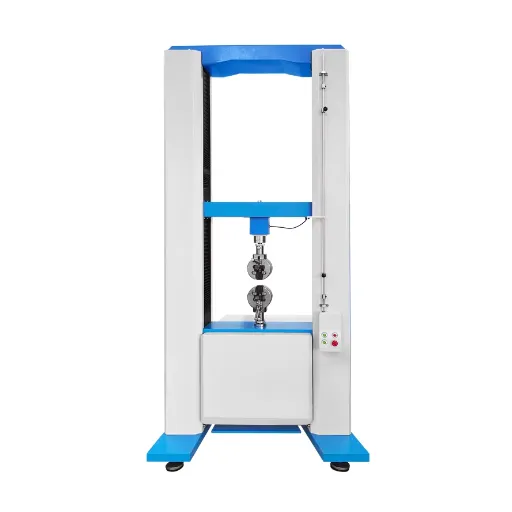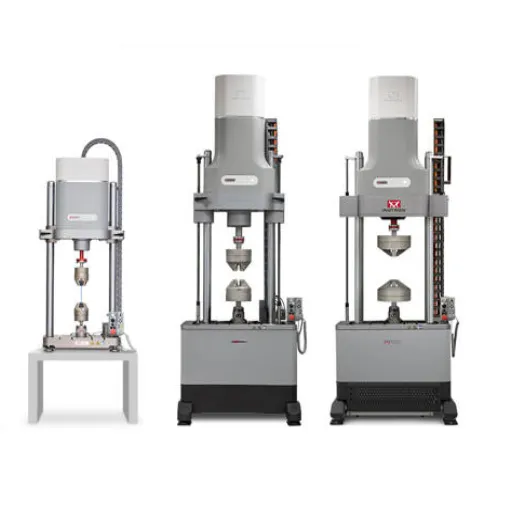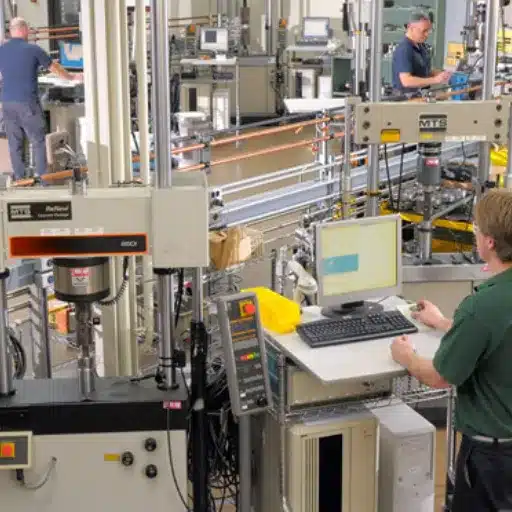In materials science and engineering, the study of mechanical properties is vital for selecting an appropriate material. Flexural strength and tensile strength are two major properties that characterize materials and determine their behavior under stress. So, what distinguishes these two properties, and how does modulus come into play? We will examine the fundamental differences between flexural and tensile strength, analyze how modulus fits into this picture, and finally, discuss how this is applicable to real life. From the perspective of an engineer, designer, or even a layman with a curiosity about materials, this article will put forth a handful of useful information to further the understanding of these very important mechanical properties. Stay with us as we unravel their complexities and bring it all into context.
Introduction to Flexural and Tensile Strength

Defining Flexural Strength
Being a bending stress applied perpendicular to the longitudinal axis of a specimen, flexural strength refers to the maximum stress that a material withstands before rupture or failure under bending. This property is essentially important in materials such as concrete, ceramics, and composites, for which resistance to bending is a factor in performance and durability.
Flexural strength is determined by plotting force versus deflection under a mechanical test. Usually, three- or four-point bending configurations apply the load on the sample. The result depends upon factors such as the make-up of the material, the structure, and the conditions under which they exist. For instance, a material with considerable tensile strength or elasticity usually resists bending.
It is an important factor in designing beams, bridges, and flooring systems in which materials are subjected to bending stresses. With knowledge of flexural strength, safer and more efficient designs can be prepared, and professionals are in a better position to choose materials suitable for given applications.
Understanding Tensile Strength
The term tensile strength stands for the maximum tensile stress that a material can withstand before it breaks and in this way tests a material’s resistance to being pulled apart. This is crucial in applications in which materials are put through stretching or tension. Depending on the system of measurement used, tensile strength usually is given as force per unit area, like pounds per square inch (psi) or megapascals (MPa).
This property is of utmost importance in construction, aerospace, and manufacturing, where materials need to take up considerable stresses without breaking. Being conversant with tensile strength permits engineers to make educated yards to the use of higher tensile strength means cables, beams, or structural supports. Materials such as steel and some composites can generally be said to have high tensile strength and are, therefore, more suitable for applications requiring that attribute.
To test tensile strength, a controlled tensile force is applied to the chosen test specimen until failure occurs. These test results provide manufacturers and designers with better opportunities to predict a material’s performance given actual field conditions, thereby asserting safety and efficiency in design and application. Hence, an adequate tensile strength guarantees the structure’s or product’s life expectancy and dependability.
💡 Key Insight
Importance of Strength vs Modulus
The strength and modulus of a particular material go hand in hand to determine its applicability for a particular situation. The strength of a material may be defined as its capacity to resist applied forces without loss. On the other hand, the modulus, here the elasticity modulus, is the parameter used to express the stiffness of a material, which is the resistance offered by a material to being deformed under the effect of stress. Both of these properties are carefully considered and analyzed to pick a material that is fit for any construction or functional purpose.
Deformation of a material under stress is an index of one of its mechanical properties. While strength is always necessary to design against failure, high strength materials are necessary to withstand heavy loads safely and with durability in construction or engineering. Meanwhile, modulus becomes important when deformation is to be considered; the material having a higher value of modulus will deform less under the same amount of stress, so they are used in engineering where rigidity and dimensional stability are essential.
The balance linking strength and modulus is typically acquired for performance in real-world applications. A material might present good strength but a low modulus that would make it unsuitable for any applications reliant on rigidity. Contrarily, materials with high modulus and low strength will give way to heavy loads. Particular needs are analyzed to determine whether it is structural stability or flexibility so that the manufacturer may then select from specific candidate materials to obtain safety, efficiency, and endurance.
Measuring Flexural Strength

Methods to Measure Flexural Strength
Flexural strength stands as a parameter that can be specified by standardized testing procedures aimed at assessing an ability of a material to deflect under a load. One of the most typical methods is the three-point bending test: the sample is supported by two points along its length, while a force is applied to it at some midpoint to bend it, with the maximum stress experienced by the specimen until breakdown or yielding recorded as the flexural strength of that speciment. This method of test is most widely accepted for accurately and efficiently studying the physical behavior of materials.
This is another commonly acknowledged method: a four-point bending test. Unlike the three-point bending, the force in the four-point test is applied at two distinct points along the sample, resulting in a larger portion of the material being subjected to a uniform bending moment. The procedure is mostly used to test materials that may contain defects or to examine some localized regions of interest within a specimen. Both are governed by international standards to ensure the reproducibility of results upon controlled conditions.
The method of choice for testing depends on the nature of the material being studied and the particular application requirements. For example, for structural application materials, either of the two methods might justifiably sanction thorough testing to perfectly comprehend performance under different kind of stress distributions. The test samples must be adequately prepared with regard to dimension and surface finish to achieve an accurate result. In association with each other, these methods assist the manufacturer or engineer in making correct decisions as to the suitability of a particular material for a given application.
The Bend Test Explained
The bend test is one of the simplest mechanical tests for ductility, flexibility, and resistance to a forced fracture in bending. The specimen is forced to bend until a certain degree, or it is forced to form a fracture. Sometimes these are tests for welds, sheet metals, and other materials that require bending without fracture.
A specimen for testing is generally supported on two points and loaded at the midpoint from above, which is called three-point bending. Filling doctors are interested in how a material passes through deformation and the presence of cracks, fractures, or permanent deformation in the material. This information gained from the test allows determining whether the material may hold together when bent in its plinth.
The outcome in a bend test shows worthless items about the quality and appropriateness of a material that serves some particular engineering purpose. For instance, a material will most often be desired that can bend with no cracking or fracturing where flexibility is a priority. Now when it does not pass the tests, consider a material for use in any application requiring strength under bending stresses. These results provide insight into the safety and reliability of material use for the common man by the manufacturers and engineers.
Factors Affecting Flexural Strength Measurements
A variety of factors affect the flexural strength measurement of the materialsge, thus affecting the accuracy in determining it. Among the main factors can be cited the composition of the material, the geometry of the specimen, and the testing/loading conditions.
Primary Factors:
- Material Properties: The inherent properties of the material, such as its microstructure, density, and manufacturing method, may have a bearing on this phenomenon. Changes in material composition, impurities, and inconsistent distribution of the constituent phases usually cause variation in flexural strength.
- Specimen Geometry: The geometry of the test specimen also influences the measurement itself. Size and shape of the specimens in addition to the applied type of loading, accepted as varied stress distribution, are considered to cause changes in results.
- Environmental Conditions: The environmental and testing conditions, such as temperature, humidity, and loading rate, are highly vital.
For instance, the strength of composite materials can vary depending on the alignment of fibers and their quantity within the matrix. Usually, the longer the span between supports, the lower the flexural strength is measured, while edges or surface flaws may also act as stress concentrators to reduce material performance.
For instance, certain materials get weakened at high temperatures, and in another example, high humidity could affect those materials, especially wood or composites, through moisture absorption. The speed of loading influences results too: fast loading rates tend to give high measured strengths because there is little time for crack propagation or material deformation.
Depending on the above factors and controlling them during testing will have a direct bearing on the actual and real value of flexural strength of a material and hence will guide its safe and effective application in the field.
Fundamental Principles of Flexural Modulus

Understanding Modulus of Elasticity
The modulus of elasticity, sometimes known as Young’s modulus, measures the stiffness or resistance of a material to deformation. It specifies the relationship between stress (defined as force per unit area) and strain (defined as the proportional linear deformation) experienced by the material. Simply put, it is a measure of the amount of deformation a material will undergo under a certain load while remaining within the elastic limit, wherein the material can return to its original configuration upon removal of the load.
The modulus is the ratio of stress to strain obtained in the linear part of the stress-strain curve wherein the deformation is elastic in nature. Hence, it is generally given in terms of pascal (Pa) or pound per square inch (psi). Knowing this property is very important for predicting how a material will behave when it is subjected to a load, especially when choosing a material for an engineering design that requires a particular degree of stiffness or flexibility.
Materials with a high modulus of elasticity, such as steel, scarcely deform under load; thus, these materials are used for structures that need rigidity. A low modulus of elasticity is conversely displayed by materials such as rubber, which are capable of flexing and stretching. Hence, this ensures guaranteed performance of the materials instructural, mechanical, and industrial uses.
Determining the Flexural Modulus
The material’s flexural modulus is obtained by conducting a flexural test, typically following a three-point bending methodology. When force is applied at the center of a material specimen supported at two ends, the bending behavior of the specimen due to the applied loads is measured. The flexural modulus is found by dividing the stress by strain within the elastic deformation region, before the actual yielding and breaking of the material.
This modulus ranks as one crucial mechanical property that relates to the stiffness of a material when subjected to bending loads. Higher values signify greater rigidity, with less deflection when a load is applied, making those particular materials fit for load-bearing tasks. In order to render accurate results, the testing conditions must be held with respect to the specimen’s geometry, loading rate, temperature, etc.
Flexural modulus usually gets tested for polymers, composites, metals, and ceramics to keep track of their usefulness in structural and mechanical applications. This property tends to help engineers and designers choose correct materials according to the performance requirements so as to provide safety, reliability, and efficient working styles to a given set of industries.
Relationship Between Flexural Moduli and Material Properties
Flexural moduli are related to the stiffness of the material and its resistance to deformation due to bending force. Materials with high flexural moduli, such as ceramics and metals, are quite resistant to bending; hence, they tend to retain their shape under heavy loads. On the other hand, materials with low flexural moduli, such as some polymers, bend more with the application of the same forces and therefore deform more quickly.
Flexural moduli relationships with some material properties such as tensile strength and elasticity are also important. High flexural modulus signifies stiffness, but it does not necessarily mean the material will be tough or capable of absorbing an impact without breaking. It does apply though that at times these are materials with good stiffness yet poor ductility, and such imperfection usually leads to abrupt failure when a quick load or vibration force worsens it. An understanding of how these properties interplay becomes relevant in applications requiring a bit of both-rigidity and resilience.
Environmental factors may have more influences on flexural moduli. Consider temperature changes affecting the material’s behavior: most polymers are soft and less rigid with an increase in temperature. Similarly, exposure to mechanical stresses for long intervals and to chemical environment may cause deterioration of the material’s structure, thus making for complicated performance under bending forces. Hence, operating conditions and performance requirements should be taken into consideration when it comes to choosing materials based upon their flexural moduli.
Applications Across Engineering Disciplines

Flexural Strength in Structural Engineering
This property is considered essential as far as the bending action is involved and thus is widely considered in structural engineering. Traditionally, it determines the stability of beams or slabs or bridges against bending stresses. High strength thus implies that the material may adequately resist these forces without cracking, deformation, or failure and hence is the significant factor in design and material selection.
As a rule, materials with sufficient flexural strength are used to achieve the equilibrium of safety, economy, and efficiency in structural engineering. For example, one of the most common construction materials is reinforced concrete because the combination of concrete with steel reinforcement gives it very good flexural capacity. Here, steel ensures tensile force to resist bending force, whereas concrete provides compressive stresses, giving the structure above-average strength and reliability. This resultant synergy is indispensable for designing components that carry static as well as dynamic loads.
The application of bending tests, under specific and controlled conditions, is another method to measure flexural strength. Hence, the bending tests help ensure that materials will perform adequately when applied to the real-world situation, thereby ensuring that their designs will remain resilient and structurally sound during the entire service life. Understanding and utilizing these principles allows engineers to design infrastructure that is safer and more durable, capable of fulfilling both functional needs and environmental criteria.
Composite Materials and Their Flexural Properties
A composite material is an advanced material engineered by combining two or more different constituents, such as fibers, polymers, or ceramics, to give a new material possessing a set of properties. These materials are valued in aerospace, automotive, and construction industries for their high strength-to-weight ratio, corrosion resistance, and ease of design. Flexural strength is an important property of composite material, as it measures the ability of the material to resist bending forces while undergoing distortion or fracture.
The flexural properties of composite materials are influenced by various factors, such as the types of fibers, the matrix material, and the overall layering structure. Fiber reinforcements like carbon or glass fibers usually provide stiffness and tensile strength, whereas the matrix, such as epoxy or polyester resin, holds those fibers together and permits transfer of stress between them. Orientation and arrangement of these fibers are the next very important factor: unidirectional fibers will offer high strength in one direction only, whereas woven or multidirectional fibers will improve the overall durability.
The testing methods for flexural properties, i.e., three- or four-point bending tests, are intended to determine composite materials’ behavior under load. Useful in forecasting the material behavior in real-life applications, such testing remains indispensable for the engineers. Hence, by making efficient use of composite materials with optimized flexural properties, one can build structures that are light and strong at the same time, cutting down on the amount of material used and enhancing safety as well as environmental sustainability.
Flexural Strength in Construction Projects
Flexural strength is primarily concerned with the durability and performance of construction materials. It measures the ability of the material to resist bending forces without failure-a force present in beams, slabs, and panels. In constructing any component, the strength must allow for flexural stresses, so materials of great flexural strength can withstand heavier loads while still breaking down in the structure, thus complementing modern civil construction projects of safety and longevity.
One of the most widely used materials in construction is concrete, wherein flexural strength is primary. Concrete may have very good compressive strength, but usually, it has lower tensile and flexural strength and it tends to crack upon being subjected to bending stresses. Reinforcement of concrete with rebar or fibers greatly improves the flexural strength of concrete so that it can resist heavier loads and resist cracking, thereby increasing structural stability.
Besides concrete, advanced composites and engineered wood have become attractive options due to good flexural performance. These include strong, lightweight, sustainable materials-mainly categorizing engineered materials into the sustainable building practice. Choosing materials optimized for flexural strength enables engineers and builders to design structures that will perform efficiently and safely while minimizing the carbon footprint of the project. These considerations for custom-engineered materials have allowed the industry to focus on both performance and sustainability solutions that meet in increasing demand for resilient infrastructure.
Improving Flexural Strength

Techniques to Improve Flexural Strength
Three Key Enhancement Methods:
- Fiber Reinforcement: Fiber reinforcement can be one means of increasing flexural strength. Fibers such as steel, glass, or synthetic materials are added to increase tensile strength and distribute stress more evenly throughout the structure. This, in turn, reduces cracking and impairs the material’s capacity to restrict bending forces. Fiber-reinforced composites are applied in concrete and other materials where extra strength and flexibility are required.
- Material Design Optimization: A second approach entails optimization of the material design in accordance with the manufacturing process. Varying constituent classes and ratio amounts in concrete, for instance, would likely have an enhancement effect on flexural behavior. Additives such as silica fume or fly ash alter the microstructure, thereby enhancing durability and the ability to bear loads. Admixture design is such that the material will have the prescribed mechanical properties.
- Pre-stressing Techniques: There are also pre-stressing or post-tensioning techniques that could lead to improved flexural strength, especially in the area of structures. These processes involve putting tension on steel tendons or cables embedded in such material as concrete, either before the material sets or after it has set. The compressive forces created thereby counteract tensile stresses induced while bending loads are imposed. This means the overall strength and performance of that structure is greatly enhanced.
Advanced Material Applications for Enhanced Performance
In structural engineering, the application of advanced materials is a great way of improving durability, sustainability, and overall functionality. An outstanding example includes the use of fiber-reinforced polymers (FRPs) in conjunction with other traditional materials such as concrete or steel: FRPs offer enhanced structural integrity while keeping the weight low, making them perfect for assignments involving corrosive environments or high stress. FRPs improve energy performance and increase the life span of the structure wherein frequent repair is required.
More precisely, self-healing materials represent a notable development; these are mainly intended for concrete applications. Such materials embed special additives, e.g., bacteria or microcapsules containing healing agents, which activate when cracks manifest in order to seal the damage autonomously. This invention also inculcates a longer lifespan for the structures, thereby saving them repair costs and avoiding usually disruptive methods employed for repair. Hence, another considerable value of self-healing is for the infrastructure that is worn down over time.
In the last mile, the integration of smart materials into structures is transforming the operation of buildings and systems. Materials that adapt to changes in the environment-intermediate shape-memory alloys or thermochromic coatings-are assisting in energy saving and alleviation of structural stresses. In this way, phase change material in buildings is a technology that brings forward an improved method of indoor temperature control with the storage and release of heat whenever the need to do that arises. Herein lies the future of material sciences, wherein materials are designed to enhance performance and take care of present questions like sustainability or resilience.
Sustainable Design Considerations
Sustainable design contemplates minimizing environmental impacts while additionally maximizing efficiency and functionality throughout the life cycle of the product or building. Among the main design principles are that of reducing waste, conserving energy, and respecting renewable resources. Therefore, by focusing on these aspects, sustainable design creates systems that satisfy present needs without compromising the ability of future generations to meet their own.
One feature to consider is the use of energy-efficient materials and technologies. These might include solar panels or insulation and phase change materials to regulate temperature. Another feature would be using local materials or recycled products to minimize the environmental footprint created in the production and transportation stages. Natural light and ventilation should be incorporated so that energy consumption for artificial sources is reduced, thus enhancing sustainability and comfort.
Finally, the factor of adaptive designs finds a somewhat common usage in sustainable design-each of these are yet concerned with long-term durability and functionality, as everyday utility. Adaptability in such cases poses modular construction or multi-functionality; once the existing building has fulfilled its role to less than alternative means, redressing further applications translate into a lesser-arm working demand. Regular maintenance and upgrading systems give sustainability projects a satisfying life while keeping them environmentally friendly. Hence these strategies form a channel of ecological sustainability, economic viability, and quality of life under building projection.
Frequently Asked Questions (FAQ)
Q: What is flexural force?
A: A flexural force is an applied force on a body that bends or flexes it. It is very important in determining the resistance that a material offers to deformation under a particular load and thus impacts the structural integrity.
Q: How much does flexural strength equal bending strength?
A: Flexural strength is synonymous with bending strength. It measures the force with which a material acts against bending. This value is given as the maximum stress a material experiences on bending before fracture.
Q: What affects the flexural strength of materials?
A: Factors influencing the flexural strength are the composition of the material, the presence of any defects, and the geometry of the material. Those materials with good flexural strength are generally the ones that resist deformation well.
Q: What kind of test is performed for flexural strength?
A: The flexural strength-to-the-force method consists of applying the force at two points on the sample until failure occurs. The test lets us know the flexural strength and behaviors under flexural forces.
Q: How does one define the modulus of rupture in relation to a flexural force?
A: It is a measure of the maximum stress to which a sample may be subjected when bending. It is generally regarded as very close to flexural strength and is therefore paramount in the analysis of the flexural performance of materials.
Q: What influence does the tensile modulus exert on flexural strength?
A: The tensile modulus, or stiffness of the member, governs its flexural strength. The greater the tensile modulus, the greater will be the resistance to deformation by the material where high flexural strength is desired.
Q: Why is flexural strength important for composites?
A: Since composites have been used in industries intending to work with light materials, the flexural strength of composites is therefore an important factor. The knowledge of flexural strength is applied in the design of composite materials to resist bending.
Q: Does a material’s flexural strength increase with time?
A: Materials can increase in flexural strength during their lifetime imparting possibly through curing or conditioning a composite, or by conditioning a material so that it will better resist bending and deformation.
Q: What does a high flexural modulus indicate for a material?
A: High flexural modulus means that a material exhibits a high stiffness and an ability to resist deformation by an applied force. When it concerns the application of the structure, this property is of utmost importance because such are to be withstood by strength.
Q: How do flexural strengths vary among materials?
A: They can really have a wide range of values for flexural strength, with advanced ceramics often having very high flexural strength in comparison to metals or polymers. It is precisely this difference that makes material selection an important process for particular performance requirements.
References
- Guide to Flexural Strength in Materials – A comprehensive guide discussing the importance of flexural strength in materials, particularly in construction.
- Flexural Strength – Wikipedia – A detailed overview of flexural strength, including its definition and applications.
- The Ultimate Flexural Strength Test Guide: Procedures and Applications – A resource explaining testing standards like ASTM D790 and ISO 178 for assessing flexural properties.
- Flexural Modulus: Definition, Calculation, and Importance – A detailed explanation of flexural modulus and its relevance in materials like plywood and reinforced concrete.
- Research on Flexural Mechanical Properties and Applications – A scientific study on flexural mechanical properties, focusing on innovative materials like foamed concrete.







